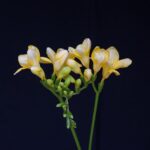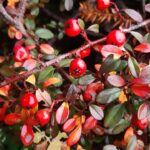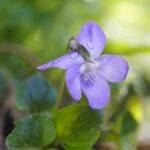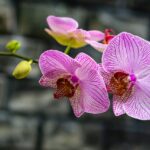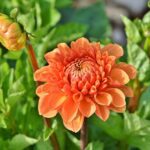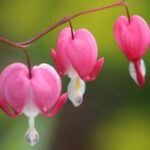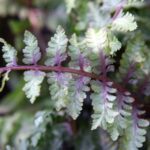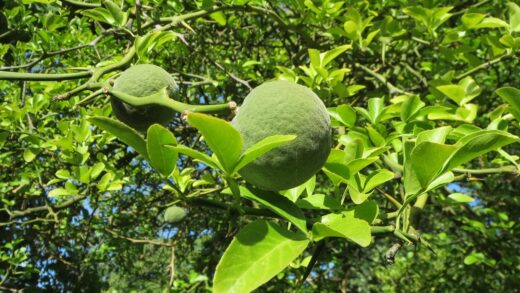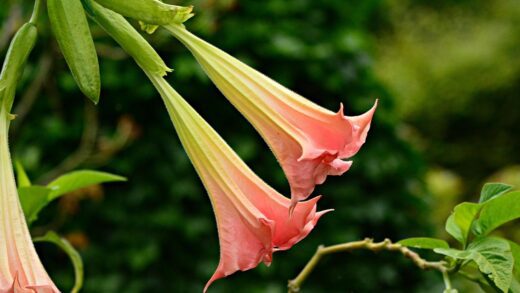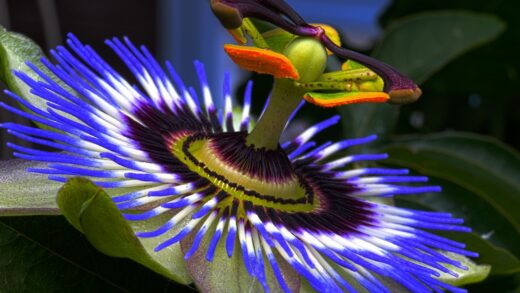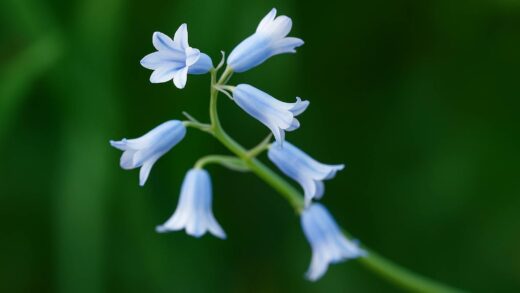Pruning a black pine is a practice that blends art with horticultural science, requiring a clear understanding of the tree’s unique growth habits to be successful. Unlike many deciduous trees that can be cut back hard, pines have a very specific way of growing that dictates how and when they should be pruned. Improper cuts can leave permanent bare spots or damage the tree’s natural form, while thoughtful, well-timed pruning can enhance its structure, control its size, and promote a denser, healthier appearance. This professional guide provides detailed insights into the philosophy, techniques, and timing necessary for effectively pruning and shaping your black pine.
The philosophy behind pruning pines
The fundamental principle to understand before pruning any pine is that they primarily grow from terminal buds located at the tips of their branches. These buds elongate in the spring to form the new shoots, known as “candles.” Pines do not have dormant or latent buds further back on the old, woody parts of their branches. This means that if you cut a pine branch back to a point where there are no needles, it will not resprout from that point. The cut branch will remain a dead stub, permanently altering the tree’s appearance.
Therefore, the primary goal of pruning a black pine is not to drastically reduce its size by cutting into old wood, but rather to guide its growth and shape its future development by managing its new growth. This is a proactive rather than a reactive approach. The focus is on controlling the length of the new shoots each year and selectively removing entire branches for structural reasons. This method respects the tree’s natural growth pattern and ensures that the tree remains fully foliated and healthy.
There are three main reasons to prune a black pine. The first is for health and safety, which involves removing any branches that are dead, diseased, or damaged. This type of pruning is essential for the well-being of the tree and can be done at any time of the year. The second reason is for structural improvement, such as removing competing central leaders on a young tree or eliminating branches that are crossing or rubbing against each other. This helps to build a strong, well-formed framework for the future.
The third and most common reason for pruning a black pine in a landscape setting is for aesthetic control—to manage its size, increase its density, and enhance its shape. This is where specialized techniques like “candling” come into play. This type of pruning is what allows a gardener to maintain a black pine as a compact, densely foliated feature in a garden, rather than letting it grow to its full, and often very large, natural size. It is a process of annual refinement rather than occasional drastic correction.
More articles on this topic
The best time of year for pruning
The timing of your pruning activities is absolutely critical for achieving the desired results and ensuring the health of the tree. Different types of pruning should be performed at different times of the year, corresponding with the tree’s annual growth cycle. For the removal of dead, damaged, or diseased wood, this can be done whenever you notice the problem, as it is a matter of sanitation and safety. However, for elective, structural, and aesthetic pruning, timing is much more specific.
The ideal time for major structural pruning, such as removing large branches or correcting a double leader, is during the tree’s dormant season. This is typically in the late winter or very early spring, before the sap begins to flow and new growth starts. Pruning during dormancy minimizes stress on the tree and reduces the “bleeding” of sap from the cuts. A wound made during dormancy will also begin to heal quickly as soon as the tree enters its active growth phase in the spring.
For the aesthetic pruning technique known as candling, which is designed to control size and increase density, there is a very specific window of opportunity in the spring. This must be done after the new shoots, or candles, have elongated but before the needles on them have fully opened and hardened. This period usually occurs in mid-to-late spring. The exact timing can vary by a few weeks depending on your specific climate and the weather in a given year. Performing this technique too early or too late will not be effective.
You should generally avoid significant pruning in the late summer and early autumn. Pruning during this period can stimulate a late-season flush of new growth. This new growth will not have sufficient time to harden off and acclimate before the first frosts of winter, making it extremely vulnerable to cold damage. Allowing the tree to naturally slow down and prepare for dormancy in the latter part of the growing season is crucial for its winter survival and overall health.
More articles on this topic
Techniques for structural pruning
Structural pruning is most important during the early years of a black pine’s life, as the decisions made then will shape the tree’s framework for decades to come. One of the primary goals is to maintain a single, dominant central leader. Occasionally, a young pine may develop a “co-dominant” leader, where two stems are competing for the top position. This creates a weak, V-shaped crotch that is prone to splitting later in the tree’s life. To correct this, you must select the stronger, straighter leader and remove the competing one entirely.
When removing an entire branch, whether for structural reasons or because it is diseased, it is essential to make the cut properly. You should not cut the branch flush with the trunk, nor should you leave a long stub. The correct place to cut is just outside the “branch collar,” which is the slightly swollen ridge of tissue where the branch joins the trunk. The branch collar contains specialized cells that are responsible for closing over and sealing the wound. Cutting into the collar damages this tissue and hinders the tree’s ability to heal.
The three-cut method is the safest way to remove a large, heavy branch without tearing the bark on the trunk. The first cut is an undercut, made on the underside of the branch about 30 centimeters out from the trunk, cutting about one-third of the way through. The second cut is made from the top, a few centimeters further out from the first cut. This will cause the majority of the branch to fall away cleanly. The final, third cut is then made to remove the remaining stub, carefully cutting just outside the branch collar.
Another aspect of structural pruning is managing the spacing of the main branches, or “whorls,” that radiate out from the trunk. Sometimes, too many branches emerge from the same point, creating a crowded and weak junction. In these cases, it can be beneficial to selectively remove one or two of the weaker branches from the whorl to allow the remaining branches more space and light to develop. The goal is to create a well-spaced, open structure that is both strong and aesthetically pleasing.
Candling for size control and density
Candling is the single most effective technique for controlling the annual growth of a black pine and promoting a dense, compact form. The “candles” are the new, elongated shoots that emerge from the terminal buds in the spring. They look like waxy, upright candles before their needles unfurl. This technique involves reducing the length of these candles before the needles have fully expanded. This effectively shortens the growth of that branch for the entire year, as the pine will not grow any further from that point until the following spring.
The process is simple but must be done at the correct time. In mid-to-late spring, once the candles have reached their full extension, you can shorten them by simply pinching them off with your fingers or cutting them with pruners. It is generally recommended to remove between one-third and two-thirds of the candle’s length. You can vary the amount you remove on different parts of the tree to shape it. For example, you might remove more from the candles on the top and upper sides of the tree to slow its vertical growth, and less from the lower branches to allow them to fill out.
A fascinating effect of candling is that it stimulates the tree to form more buds for the following year. At the base of the shortened candle, the tree will typically set several new buds, whereas an unpruned candle might only set one or two. This means that in the following spring, multiple new shoots will emerge from the point that was pruned, creating a much denser and fuller appearance over time. This is the key to developing the dense, “cloud-like” pads of foliage often seen in Japanese garden styles.
It is important to be consistent with candling if you want to maintain the tree at a specific size. It is an annual practice. If you stop candling for a year, the tree will resume its normal, more open growth habit. It is also a technique best started when the tree is young, as it is a method of guiding and shaping growth from the beginning. While it can be used to improve the density of an older, more open tree, the results will be more gradual.
Tools and safety considerations
Using the right tools for pruning is essential for both the health of the tree and your own safety. For candling and cutting small twigs, a sharp pair of bypass pruners or even just your fingers will suffice. For removing branches up to about 4 centimeters in diameter, a pair of long-handled loppers will provide the necessary leverage. For larger branches, a sharp pruning saw is required. Never use shears or hedge trimmers on a pine, as this will indiscriminately cut through needles and branches, leaving a mess of dead, brown tissue.
Keeping your tools clean and sharp is a critical aspect of good pruning hygiene. Sharp tools make clean cuts that the tree can heal more easily, while dull tools crush and tear the plant tissues, creating ragged wounds that are more susceptible to disease. It is also vital to disinfect your tools, especially your saw and pruners, between cuts when you are removing diseased wood. This can be done by wiping the blades with rubbing alcohol or a 10% bleach solution to prevent the spread of pathogens from a diseased branch to a healthy one.
Personal safety should always be a top priority when pruning. Always wear safety glasses to protect your eyes from twigs and debris, and a pair of sturdy gloves to protect your hands. If you are removing larger branches, plan your cuts carefully to control where the branch will fall, and make sure the area below is clear of people and objects. For any pruning that requires a ladder or involves working near power lines, it is strongly recommended to hire a certified, professional arborist.
Finally, after you have finished pruning, take the time for proper cleanup. Remove all pruned branches and debris from the area. This is not just for aesthetics; it is also a matter of garden sanitation. Diseased wood should be burned or disposed of in the trash, not added to your compost pile, as the pathogens can survive and potentially spread. A clean site reduces the risk of pests and diseases taking hold, completing the cycle of responsible and effective tree care.







